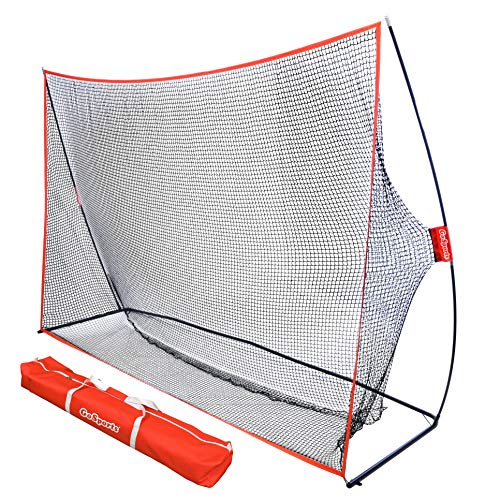For Yamaha gas golf cart troubleshooting, check for common issues like spark plug problems and fuel flow restrictions. Ensure the battery is fully charged and connections are clean.
Troubleshooting a Yamaha gas golf cart requires a systematic approach to identify and solve common operational problems. Owners often face issues with starting the engine, inconsistent power, or unfamiliar noises during operation. These problems can stem from various components such as the ignition system, fuel system, or mechanical parts.
Establishing a routine maintenance schedule and understanding the cart’s operational guidelines are fundamental for reliable performance. Addressing small concerns immediately can prevent them from escalating into more significant, costly repairs. By focusing on the basics such as spark plug integrity, battery health, and clean fuel systems, most owners can efficiently resolve common troubles with their Yamaha gas golf carts.
Yamaha Gas Golf Cart Troubleshooting Guide
Troubleshooting a Yamaha gas golf cart can seem daunting, but with the right tools and a systematic approach, you can identify and fix common issues with ease. Let’s delve into some quick fixes for frequent problems.
Symptoms like the golf cart failing to start or performing erratically can be indicative of issues ranging from simple maintenance oversights to more complex mechanical failures. Ensure that you have a basic toolkit, a multimeter, and a reference to your cart’s specific model manual before starting the troubleshooting process.
For instance, a cart that won’t start might suffer from a dead battery or a faulty ignition. Regularly checking the battery for a full charge and upkeep can often prevent starting issues. If the engine misfires or the cart loses power, the problem might lie with the fuel system or the spark plugs. Inspecting and cleaning or replacing spark plugs can often restore power and efficiency to the engine.
Yamaha Golf Cart Troubleshooting: General Problems
Yamaha golf carts are known for their reliability, but like any mechanical vehicle, they can encounter issues. Below are some common Yamaha golf cart problems and how to troubleshoot them:
Golf Cart Won’t Start
- Potential Causes:
- Dead or Weak Battery: If your cart doesn’t start, the first thing to check is the battery. A weak or dead battery could be the culprit. Ensure the terminals are clean and the battery charge is sufficient.
- Faulty Ignition Coil: A malfunctioning ignition coil prevents the spark from reaching the engine, causing a failure to start. If you notice no spark from the spark plug, it’s time to check the ignition coil.
- Fuel System Problems: For gas-powered carts, check if there’s sufficient fuel and whether the fuel lines are clogged.
- How to Fix:
- Replace the battery or recharge it.
- Test the ignition coil for damage using a multimeter and replace it if necessary.
- Inspect the fuel lines, fuel filter, and carburetor for any clogs.
Yamaha Gas Golf Cart Troubleshooting Manual
Having a Yamaha gas golf cart troubleshooting manual can help you understand your cart’s specific components and common issues. If you own a Yamaha gas golf cart, the manual provides in-depth information on:
- Engine troubleshooting: Symptoms of rough running or stalling, and how to address them.
- Electrical systems: How to diagnose electrical issues such as faulty wiring or problems with the ignition system.
- Maintenance schedules: Regular maintenance tips to ensure long-lasting performance, including oil changes, air filter cleaning, and spark plug replacements.
Key Areas Covered in the Manual:
- Starting Issues: Troubleshoot ignition coils, solenoids, and battery connections.
- Fuel System Problems: Check carburetor jets, fuel lines, and fuel filters.
- Engine Performance: Solutions for sluggish acceleration or backfiring.
Yamaha Golf Cart Fix for Common Problems
Many Yamaha golf cart fixes involve simple checks and replacements of basic components. Here’s how to tackle some of the most common issues:
Yamaha Golf Cart Not Moving or Low Power
- Potential Causes:
- A clogged fuel filter or dirty carburetor.
- Worn-out spark plug.
- Faulty throttle cable or transmission problems.
- How to Fix:
- Replace the fuel filter and clean the carburetor.
- Replace the spark plug and check for proper spark.
- Inspect the throttle cable for tension or damage.
- If needed, service the clutch or transmission system.
Backfiring or Misfiring
- Potential Causes:
- Incorrect air/fuel mixture.
- Dirty carburetor or exhaust blockage.
- How to Fix:
- Clean the carburetor and replace any damaged components.
- Ensure the air filter is clean and replace it if clogged.
- Inspect the exhaust for blockages.
Yamaha G16 Ignition Coil Problems
One of the most common issues with the Yamaha G16 model is ignition coil failure. The ignition coil is responsible for sending the spark to the spark plug, and when it malfunctions, the engine will either fail to start or run poorly.
Signs of Ignition Coil Problems:
- The engine cranks but doesn’t start.
- Intermittent starting issues.
- Engine misfires or runs rough.
How to Fix Yamaha G16 Ignition Coil Issues:
- Step 1: Use a multimeter to check the resistance of the ignition coil. The resistance should be within the specified range. If it’s outside that range, the coil is likely defective.
- Step 2: Inspect the wiring and connections to ensure there are no loose or corroded connections.
- Step 3: If the coil is faulty, replace it with a genuine Yamaha replacement part to ensure compatibility and reliability.
Tips for Maintaining Your Yamaha Golf Cart
Preventive maintenance can help avoid many common problems. Here are some essential maintenance tips for keeping your Yamaha golf cart running smoothly:
- Regularly Check the Battery: Inspect for corrosion and ensure the battery is fully charged.
- Maintain the Fuel System: Clean the carburetor, replace the fuel filter, and use fresh fuel regularly.
- Clean the Air Filter: A clogged air filter can cause poor engine performance.
- Inspect the Spark Plug: Replace the spark plug if it’s dirty or damaged.
Yamaha Gas Golf Cart Troubleshooting
Spotting The Issue
Identifying odd sounds from your Yamaha gas golf cart can be a key indicator of underlying issues. A rattling noise may suggest loose parts, while a sputtering engine could point to fuel delivery problems. It’s critical to pay attention to any unusual noises as they occur and note their specifics for troubleshooting.
Regarding performance problems, these often manifest as decreased acceleration, difficulty starting, or a loss of power during operation. Such symptoms demand a thorough review of the fuel system, ignition components, and engine to ensure proper functionality and identify potential faults.
Conducting a visual inspection might reveal damage or leaks that could be the root of your cart’s issues. This includes checking for oil leaks, damaged belts or hoses, and wear and tear on mechanical parts. Spotting these problems early can prevent more extensive damage and costly repairs, ensuring your cart operates at peak efficiency.
Yamaha Gas Golf Cart Troubleshooting :Quick Fixes For Common Hiccups
Experiencing hiccups with your Yamaha gas golf cart? Begin with a simple cleaning of the battery terminals to ensure a solid connection. Over time, terminals can accumulate corrosion, potentially leading to power issues. Use a mixture of baking soda and water, then scrub with a wire brush.
Moving on to the spark plugs, worn out or fouled plugs can impede your cart’s performance. Replacing spark plugs is a straightforward task that can restore power and efficiency. Ensure you have the correct type and gap setting for optimal operation.
Lastly, maintain your cart’s engine by checking and refilling oil levels. Low oil levels can cause overheating and engine damage. Use the recommended grade of oil, and check the levels after every few rounds of golf, filling as needed to the appropriate mark on the dipstick. Regular maintenance will keep your cart running smoothly.
Fuel System Checks
Fuel system issues can often be traced back to the fuel lines. Clogged or damaged fuel lines restrict the flow of fuel to the engine, leading to performance issues. Ensure that the lines are not only clear but also free of cracks or wear. Clean lines help maintain consistent fuel delivery.
Carburetor maintenance is similarly critical for optimal operation. Over time, deposits can build up and cause the carburetor to function improperly. A thorough cleaning can often resolve this. Regular maintenance helps prevent such build-up, ensuring a smooth ride.
Assessing the fuel pump is another essential step. A malfunctioning pump can lead to insufficient fuel supply to the engine. Listen for any unusual noises and check for leaks. If the pump is not operating correctly, it may need to be replaced.
Ignition System Woes
Testing the ignition coil in a Yamaha gas golf cart requires some technical knowledge but is essential for pinpointing issues. First, ensure the battery is fully charged and all connections are clean and tight. Use a multimeter to test the primary and secondary coil resistances. Values outside the specified range indicate a faulty ignition coil that may need replacing.
Troubles with the ignition switch manifest as difficulty starting or an inability to start the cart. Inspect the switch for signs of wear or damage. Perform a continuity test with a multimeter to check each position of the switch. A lack of continuity suggests the switch is defective or malfunctioning. Replacement is straightforward but should be done with attention to wiring connections to prevent further electrical complications.
Battery And Electrical Concerns
Maintaining a healthy battery is crucial for the smooth operation of your Yamaha gas golf cart. Ensure regular cleaning of battery terminals to prevent corrosion, and check that the battery holds its charge effectively. Keeping the battery topped up with distilled water (but not overfilling) will also prolong its lifespan. It’s essential to ensure cables are tightly secured to prevent any power issues.
Encountering electrical issues often leads to tracing and fixing wiring problems. Inspect all wires for signs of wear or damage, and replace any that are not in top condition. A solid connection throughout the system is vital to maintain uninterrupted electrical flow.
The starter generator, a key component in the ignition process, requires regular checks to confirm its working order. Symptoms of a faulty starter generator include difficulty starting the engine or a complete failure to start. Use a multimeter to test the starter generator’s continuity to ensure it functions correctly.
Engine Troubles On The Green
Quick solutions are crucial when your Yamaha gas golf cart engine starts and then stops shortly after. Checking the fuel lines for blockages or leaks is a smart first step, followed by inspecting the ignition components for wear or damage. Cleaning or replacing the spark plug can often resolve this issue. Ensure the air filter is clean to maintain proper airflow to the engine.
Taking preventative measures against engine overheating can save time and money. Regularly check the cooling fins and the radiator (if equipped) for debris that could hinder air flow, and confirm that the coolant levels are sufficient. Using the correct type of oil and changing it according to the manufacturer’s recommendations facilitates optimal engine cooling.
Understanding compression issues involves recognizing the signs of poor compression, such as a lack of power or an engine that misfires. A straightforward compression test will indicate if there’s a problem. Causes might range from a worn piston ring to valve leakage. Addressing these components often resolves compression-related troubles.
Routine Maintenance For Prevention
Regular cleaning practices are essential for maintaining the optimal performance of your Yamaha gas golf cart. It is crucial to remove dirt, debris, and grime that can accumulate over time, potentially causing damage to moving parts and corrosion. Ensure to clean the battery terminals, check for any signs of wear and tear, and wipe down all surfaces to prevent buildup.
Proper lubrication is another key to preventing issues with your Yamaha gas golf cart. Important lubrication points include the front suspension, steering system, and wheel bearings. Use the recommended lubricants to ensure smooth operation and extend the life of these components.
| Inspection Item | Frequency | Notes |
|---|---|---|
| Battery Terminals | Monthly | Check for corrosion, clean and tighten as needed |
| Tire Pressure | Bi-weekly | Maintain proper pressure for optimal performance |
| Cables and Hoses | Monthly | Look for signs of wear or damage |
| Oil Level | Bi-monthly | Top up or change oil as necessary |
Get Back On Course
Professional assistance might be necessary if your Yamaha gas golf cart exhibits persistent issues beyond basic fixes, such as failure to start, unusual noises, or performance irregularities. Safety concerns, such as issues with the braking system or steering components, should prompt immediate attention from a qualified technician.
Maintaining a detailed troubleshooting log can expedite repairs and ensure you have a record of past issues and the actions taken. Notate the date, problem encountered, and steps performed to resolve the issue. This information can be invaluable for diagnosing recurring problems or for enabling a technician to quickly understand the cart’s history.
- Regular maintenance, such as checking battery connections, examining tire pressure, and changing engine oil and filters, will significantly enhance your golf cart’s lifespan.
- It is recommended to clean the cart thoroughly after every use to prevent rust and corrosion.
- Avoiding harsh terrain and driving techniques that stress the cart’s components can further prevent premature wear and tear.

Credit: www.golfcartking.com
Frequently Asked Questions For Yamaha Gas Golf Cart Troubleshooting
Why Won’t My Yamaha Golf Cart Start?
There might be various reasons, such as a dead battery, clogged fuel filters, or ignition problems. Check the battery charge and ensure fuel lines are clear. If the problem persists, it may require professional servicing.
How To Fix Yamaha Golf Cart Engine Stuttering?
Engine stuttering is often due to dirty spark plugs or a clogged carburetor. Replace the spark plugs and clean the carburetor for improved performance. Also, check the fuel quality and replace if it’s stale.
What Causes Yamaha Golf Cart Power Loss?
Power loss can occur from dirty air filters, worn-out belts, or battery issues. Clean or replace air filters and inspect the belts for wear. Check the battery connections and charge level as well.
How Do I Troubleshoot Yamaha Golf Cart Battery Issues?
Check the battery terminals for corrosion and clean them. Ensure the batteries are properly charged. If they’re old or fail to hold a charge, they likely need replacement.
Conclusion
Navigating the quirks of a Yamaha gas golf cart can be straightforward with the right insights. From ignition issues to fuel system troubles, we’ve covered essential tips to keep your cart running smoothly. Remember, regular maintenance and prompt repairs are your best allies for a hassle-free ride on the green.
Safe driving!





